Clean, unadorned lines and an open, spacious feel are the hallmarks of modernist garden design. Food gardens —with their exuberant growth and chaotic medley of species that can go from tiny seedlings to an overgrown jungle to half dead and decrepit looking over a six-month period — seem like a contradiction to the contemporary look that is so prevalent in landscape design today. But that need not be the case. With careful plant selection and the right hardscape materials, incorporating edibles into your modernist landscape is easier than you might imagine.
Whether you’re designing a landscape for a backyard in Southern California or a rooftop in Manhattan, the same concepts apply: Place sprawling vegetable gardens in contemporary containers and leave lots of empty space around them so the eye has a place to rest.
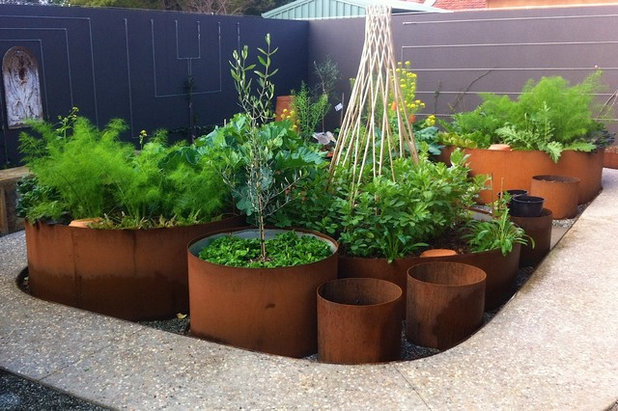
sustainable garden design perth
Consider metal planters. Cor-Ten steel planters, like the circular ones pictured here, have become widely available in recent years and are a contemporary alternative to the traditional wood box planter.
Note the clean lines around the garden made with edging, a wide pea gravel path and the cool-toned painted fence in the background. These all maintain the modernist look in a yard that features a sprawling vegetable garden front and center.
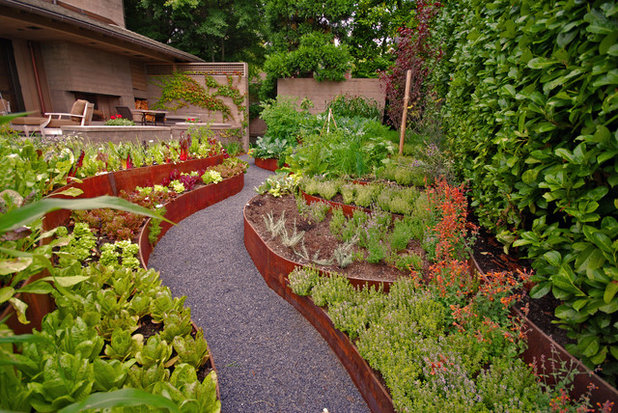
Exteriorscapes llc
One of the wonderful things about Cor-Ten steel is its ability to bend. Modernist design often juxtaposes straight lines and fluid, organic shapes in interesting ways to create an overall design that is abstract but visually compelling.
See more ways to use Cor-Ten steel in the landscape
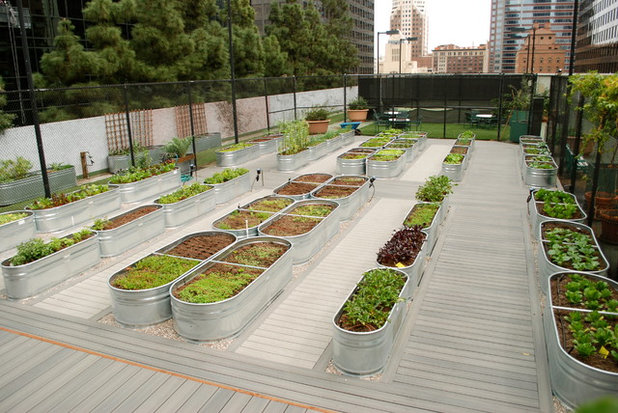
Farmscape
Corrugated steel containers also fit the modernist aesthetic well. Livestock watering troughs, which come in many shapes and sizes, can be almost-sinstant vegetable planter — just drill ¾-inch drain holes every 12 inches or so in the bottom, fill with planting soil and you’re ready to go.
Here, the long lines of the oval containers create a striking futuristic design on this Los Angeles rooftop. Again, minimalism is key — the designer used nothing but the containers and cool, neutral-toned hardscape materials to create a clean, orderly feel.
10 Expert Tips for Growing Edibles in Containers
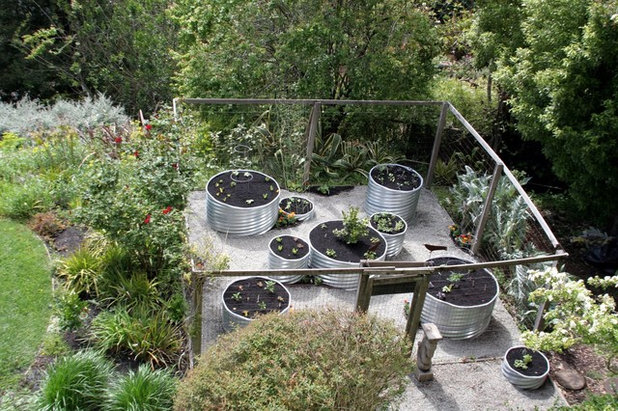
NATALIE SERDIUK
Modernism has nothing against symmetry, but “orderly randomness” is also frequently used. This fenced-in vegetable garden in Berkeley, California, becomes an abstract work of art when viewed from above.
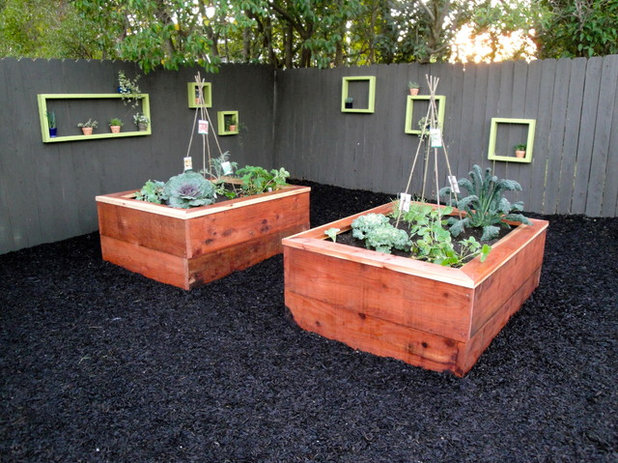
Clean Cut Landscape
Get creative with wood. Wooden vegetable planters will also work in a modernist garden if designed in the right way. One simple key is to avoid using ones with a lip that extends over the top edge of the planter. The lips are the horizontal wooden boards that often cap the vertical wooden sides of wood planters, but they go against the modernist emphasis on clean, unadorned lines.
This design includes a lip, but the lip is set over the inside of the planter to maintain the clean outer line of the cubes. The lip serves a practical purpose as a place to sit or rest tools on, which is helpful in an edible garden.
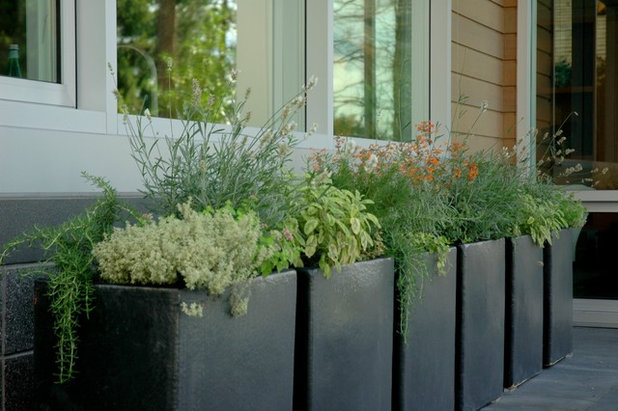
ModernBackyard
Use glazed pots. Traditional terra-cotta pots go great in a Mediterranean edible garden but are a poor choice for a contemporary garden. Glazed pots, especially those with a tall, thin profile, fit the modernist look much better. Use them for herbs, vegetables or berry bushes.
See how to grow a patio-perfect berry bush
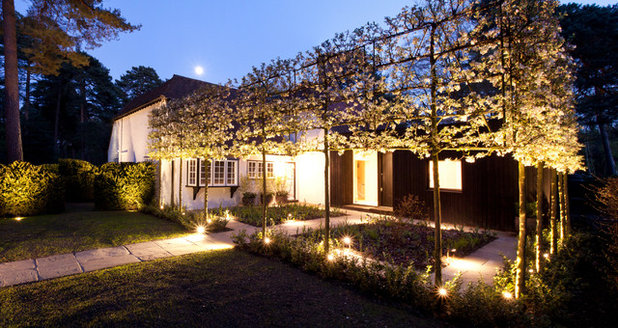
Rosangela Photography
Don’t forget fruit trees. Fruit trees often give off an old-fashioned vibe, but there are ways of getting around that. These pleached apple trees (
Malus domesctica,
USDA zones 3 to 9; find your zone) are a great example.
Pleaching simply means to train a row of trees or shrubs into a flat shape by tying and interlacing their branches together. It is similar to espaliering, in which individual plants are trained to grow on a flat plane, usually a wall. Pleaching and espaliering are high-maintenance approaches, but they’re a sure bet for getting fruit trees — as well as edible vines and shrubs — to conform to a contemporary design.
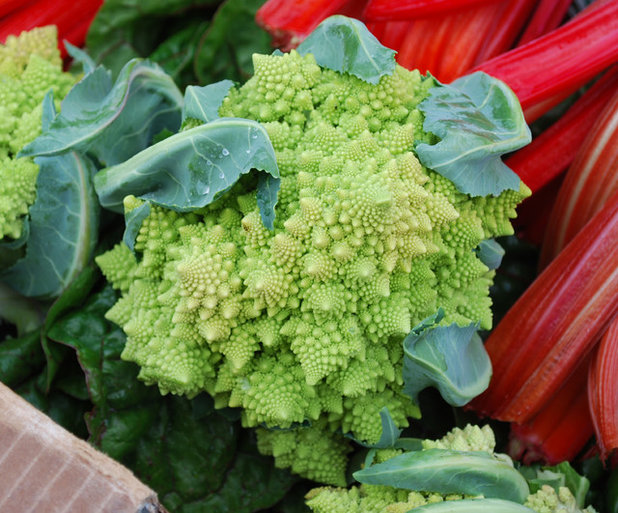
Jocelyn H. Chilvers
Choose edible species carefully. Clutter is the enemy of modernist landscapes and the reason that edibles, especially vegetables, are not often included in them. Even the most unkempt vegetables, like tomatoes, can fit the part if surrounded by the right hardscape elements, but another approach is to choose edibles that match the contemporary aesthetic.
Asparagus, for example (which is a perennial vegetable for USDA zones 3 to 10), has a tidy appearance, with wispy fronds that are reminiscent of ornamental grasses and other species often used by modernist designers. Eggplant is also a tidy plant, and its smooth, oblong fruits look fantastic in a glossy, glazed container.
The Romanesco cauliflower and red chard pictured here are an example of the abstract artistry found in some vegetable combinations, which are quite stunning when incorporated in an edible modernist garden.
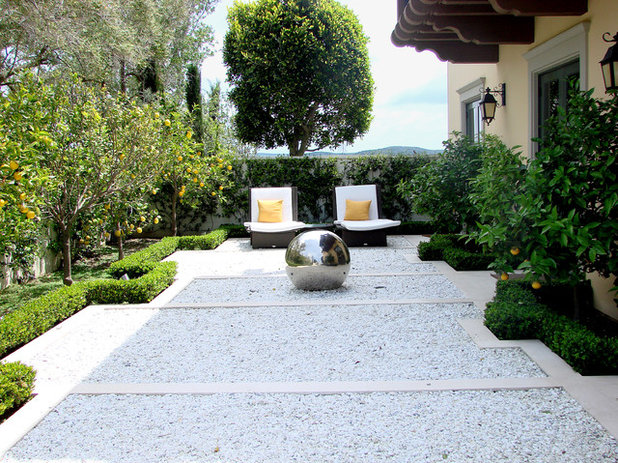
AMS Landscape Design Studios, Inc.
A good rule of thumb for modernist design is that at least half of the garden be devoted to static architectural shapes, such as hardscaping, cropped turf and neatly clipped shrubs, as opposed to plants that change significantly throughout the seasons (like perennial flower borders).
In that vein, you may want to limit your use of edibles in a modernist landscape to a small portion of the nonarchitectural part of the design. That way the food plants will form a counterpoint in a balanced larger picture, as the bright yellow lemons do on the left side of this garden.





